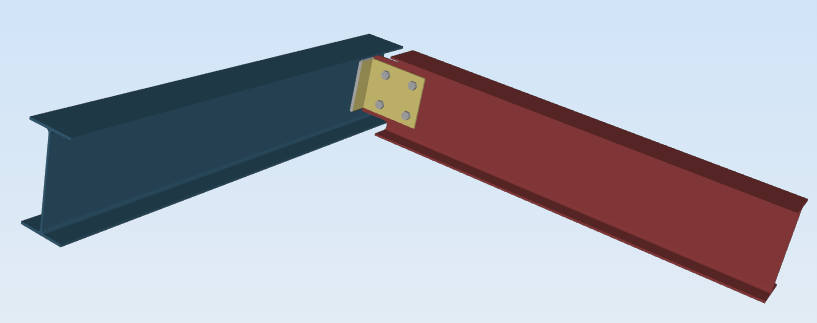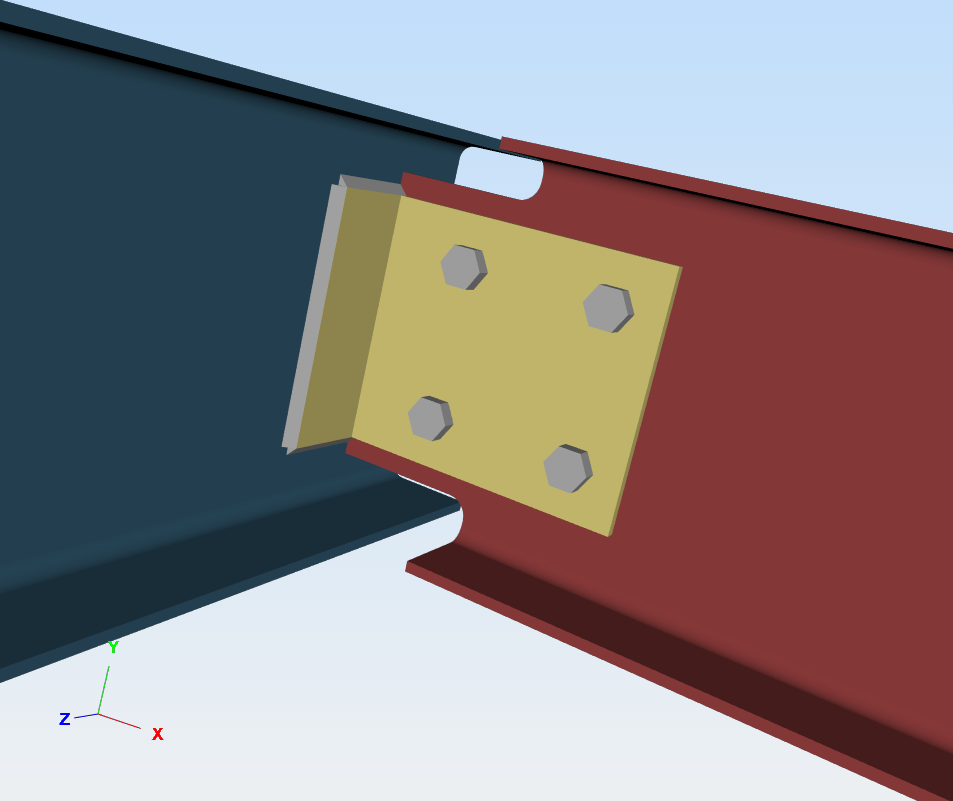Het kind(ren) lid(s) zijn de ondersteunde leden van uw verbindingssamenstel. Sommige verbindingsconstructies ondersteunen alleen 1 kind lid, terwijl anderen meer dan steunen 1. Het onderstaande voorbeeld is van een HSS-naar-W-kraagplaatverbinding met 2 kinderen (ondersteund) leden.
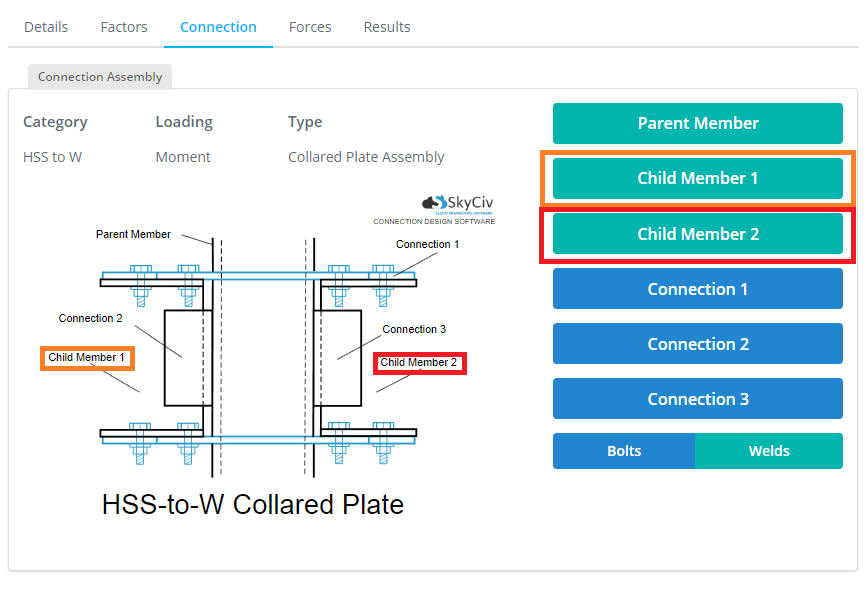
Geïntegreerd
Vergelijkbaar met het bovenliggende lid, bij gebruik van verbindingsontwerp geïntegreerd met SkyCiv S3D, de meeste opties kunnen niet direct worden bewerkt. In plaats daarvan, de doorsnede- en materiaaleigenschappen worden overgenomen van het element dat in de samenvattende tabel is gekozen. Om de waarden te wijzigen, u zult de sectie- en/of materiaaleigenschappen terug in het model moeten wijzigen. Het belangrijkste bewerkbare veld is de speling, Dit is de afstand vanaf het vlak van het onderliggende onderdeel tot het verbindingsvlak van het bovenliggende onderdeel. Standaard, het zal zijn 0.
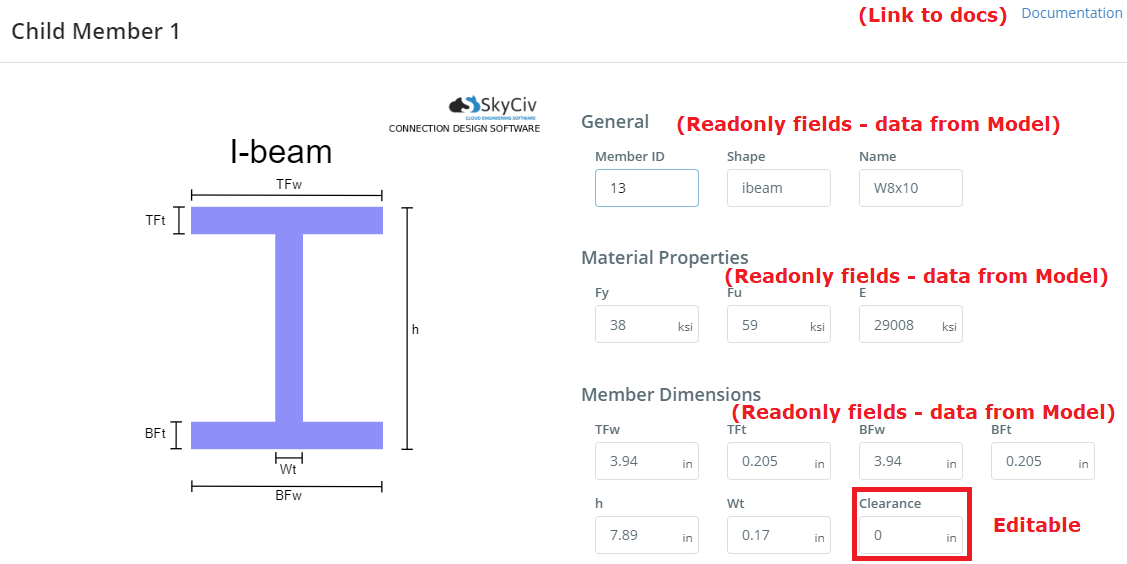
Standalone
Net als de opties voor bovenliggende leden voor de zelfstandige versie van Connection Design, U kunt de doorsnede wijzigen door er een toe te voegen uit onze sectiedatabase-pop-up. Klik eenvoudig op de knop om aan de slag te gaan.
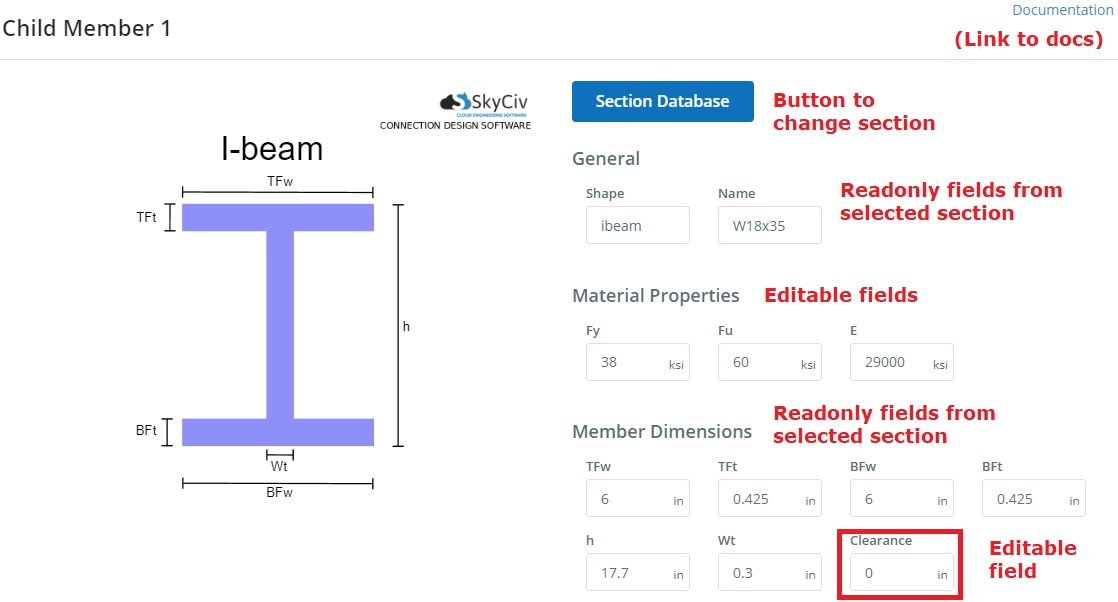
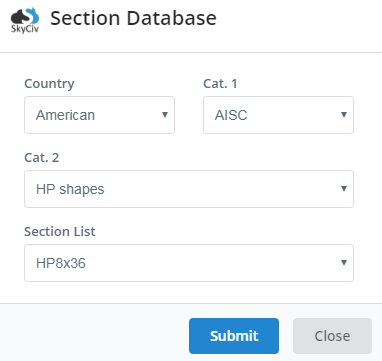
Coping-opties
Wanneer coping mogelijk is, dat wil zeggen wanneer het zich tussen W-naar-W-secties bevindt, in een straal-tot-straal oriëntatie, waarbij de flenzen evenwijdig zijn en de lijven loodrecht staan, de coping-opties zijn beschikbaar, zoals hieronder weergegeven.
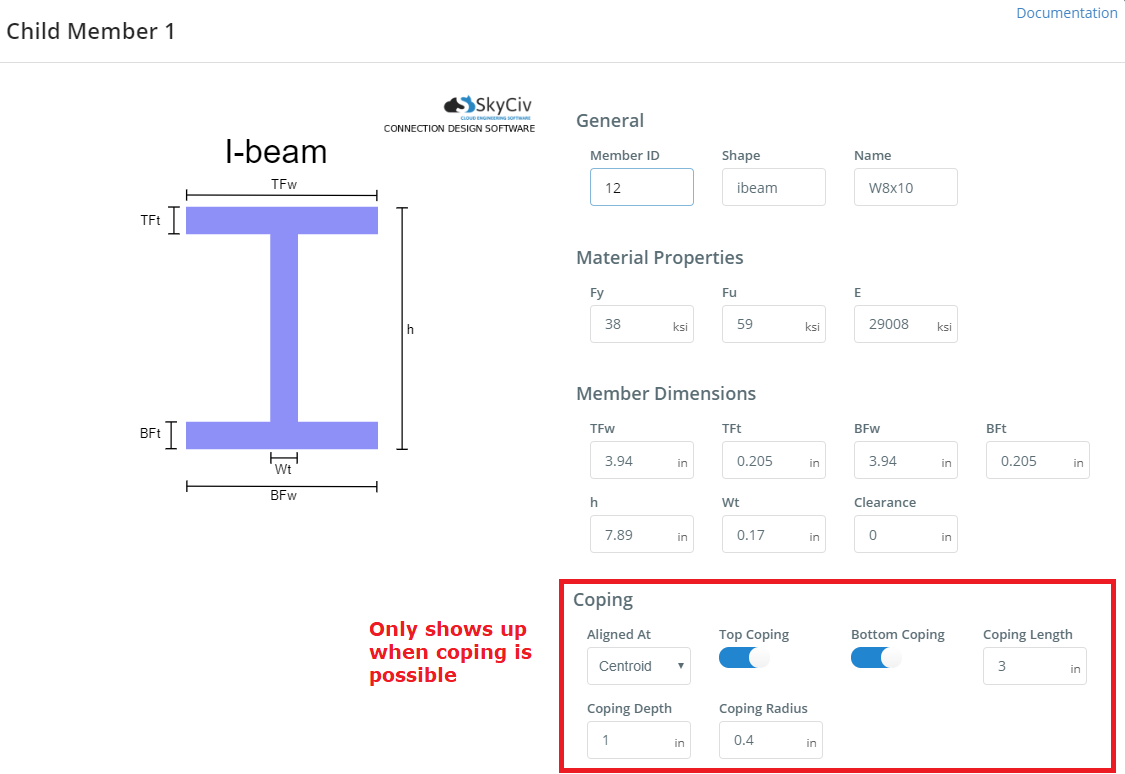
Coping-opties
- Uitgelijnd op: Kies tussen ‘Centroid’, ‘Bovenrand’, 'Onderrand'. Dit is de uitlijning tussen het onderliggende lid en het bovenliggende lid.
- Top omgaan: Schakel tussen uit / Aan. Indien aan, dit houdt in dat er sprake is van een goede omgang met uw kindlid.
- Onderkant omgaan: Net als de optie voor Top Coping, maar voor bodemafhandeling.
- Coping-lengte: De copinglengte is de afmeting langs de lengterichting (lokale x) as van het lid.
- Coping-diepte: De copingdiepte is de afmeting langs de lokale y-as van het element.
- Copingradius De straal van de copinghoek gevormd tussen de copinglengte en de copingdiepte.
Hieronder ziet u een voorbeeldweergave van de bovenstaande coping-opties.
